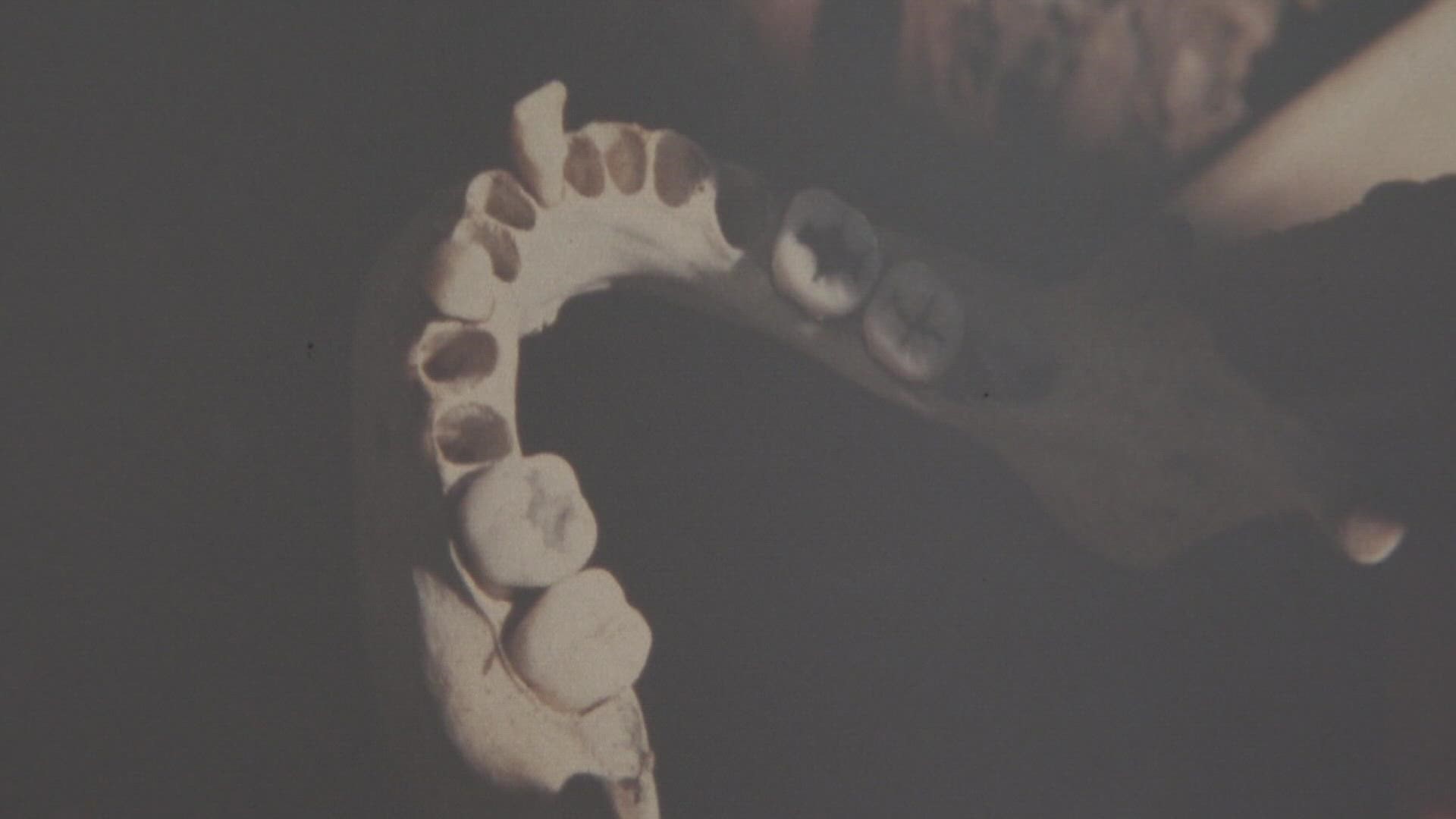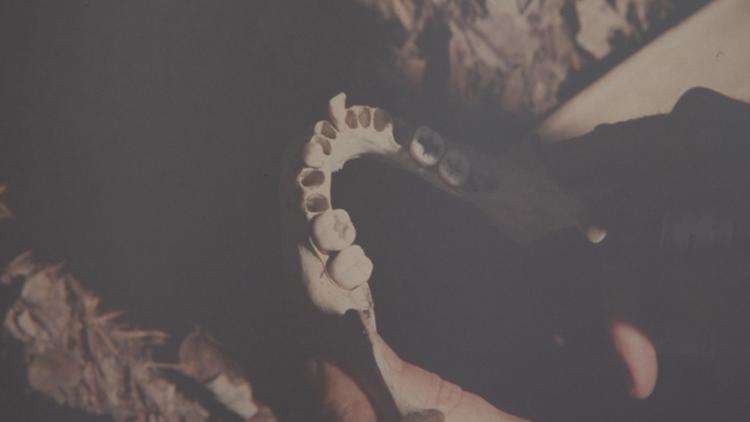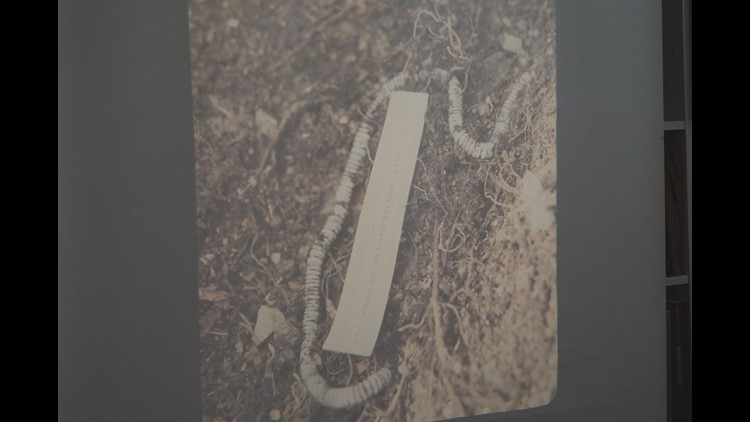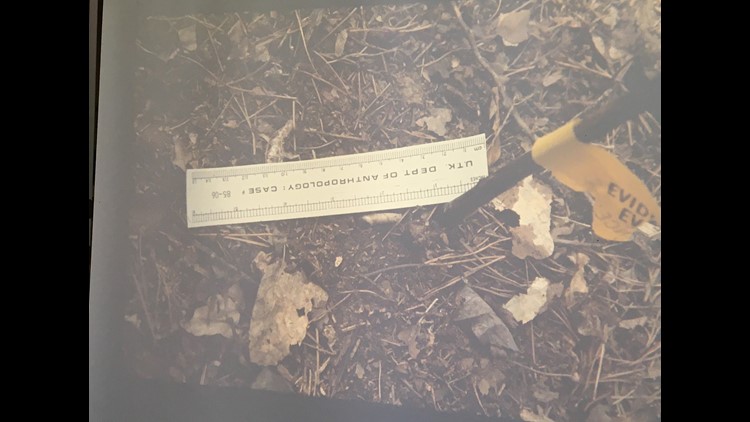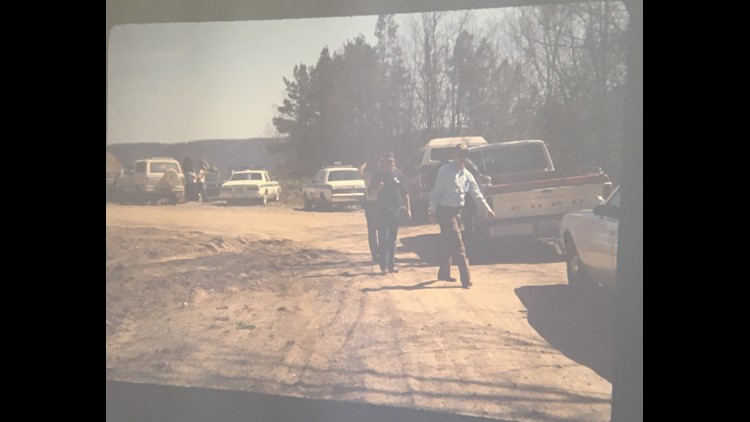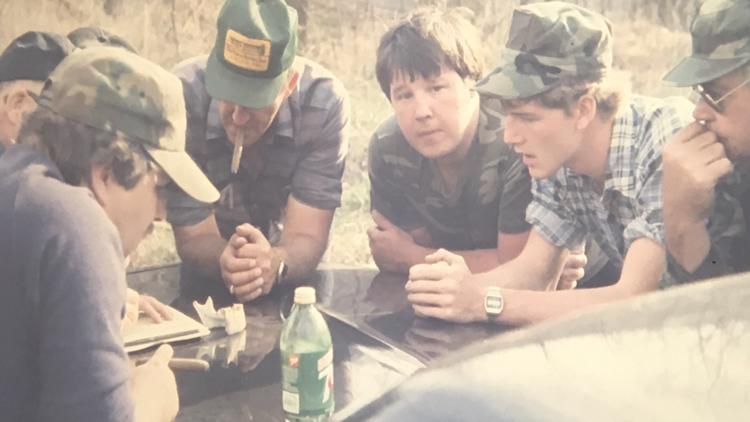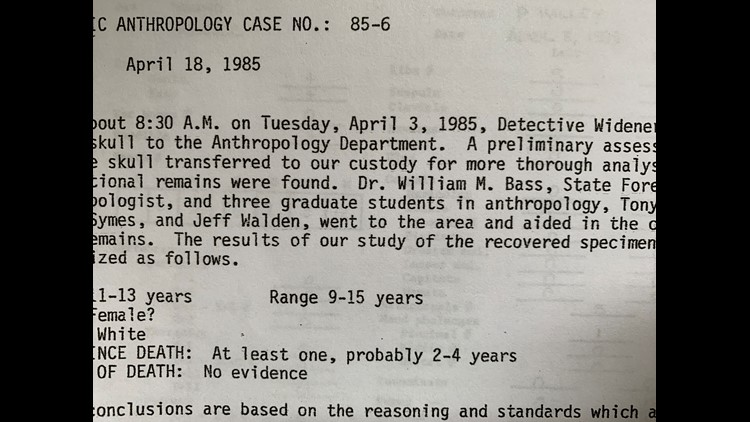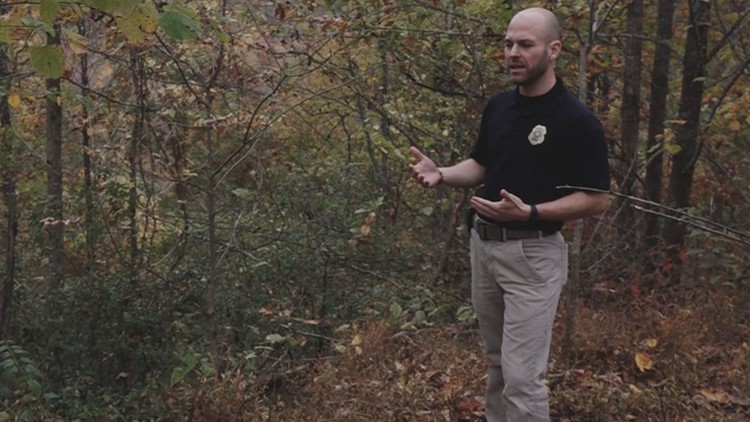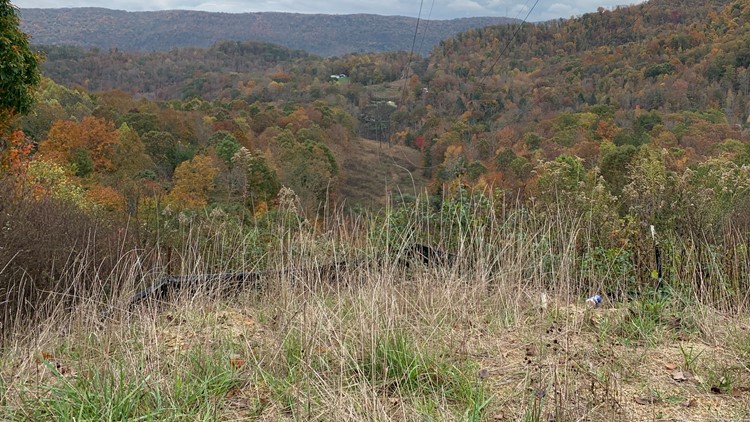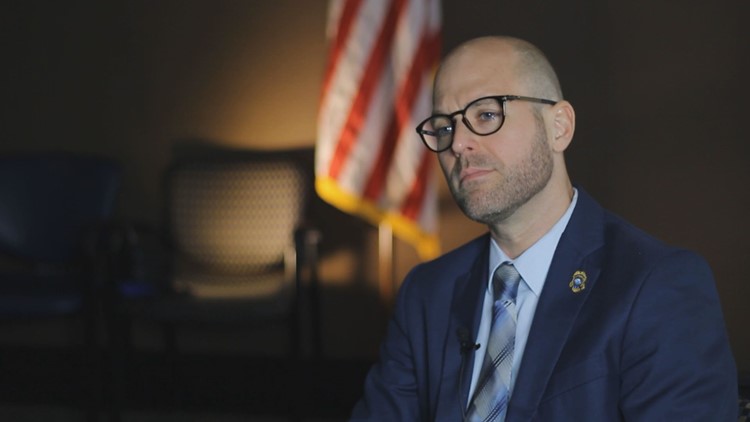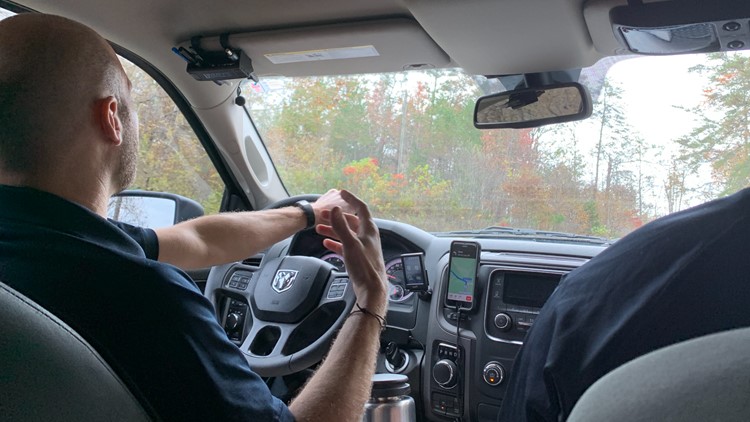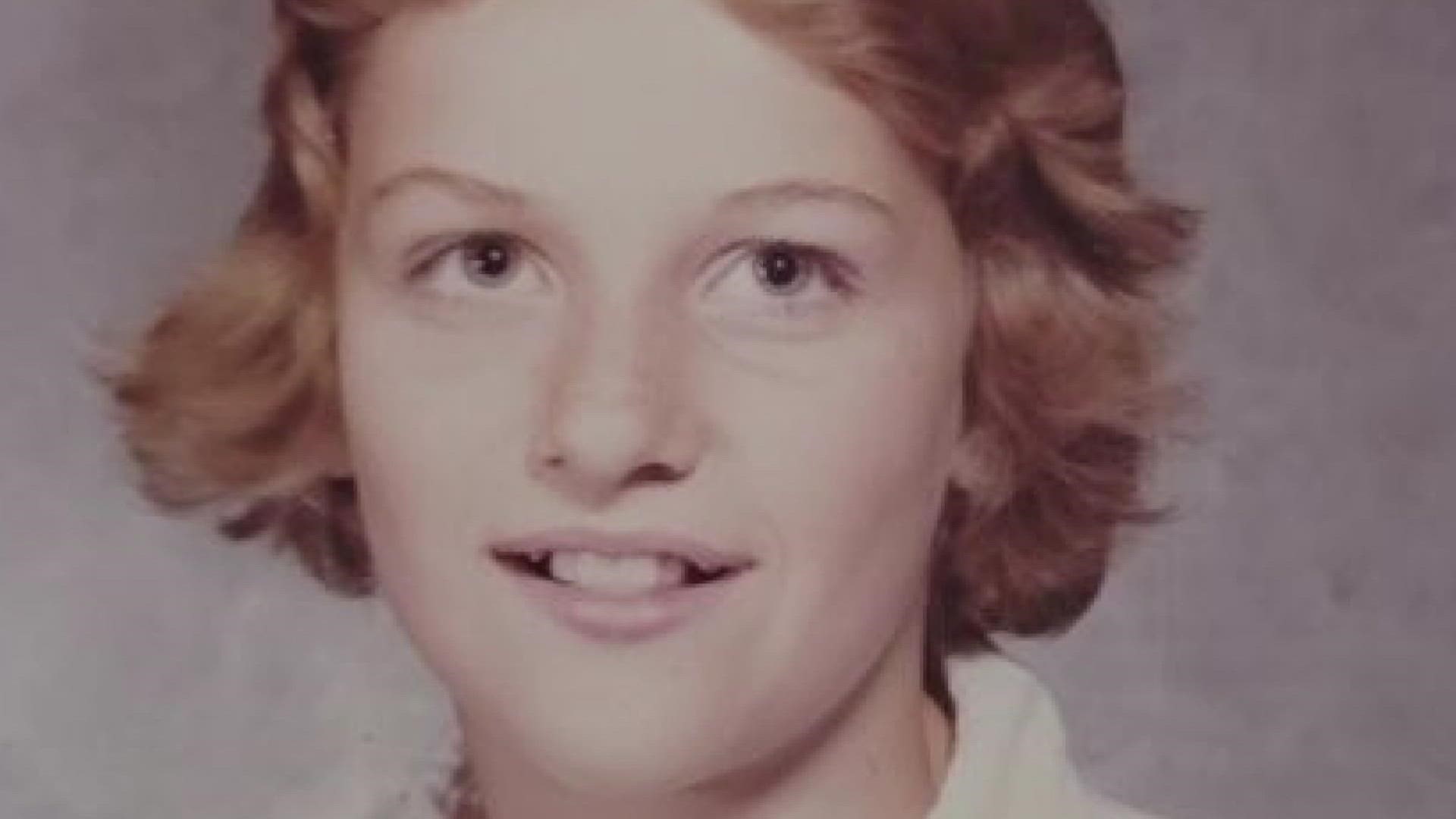KNOXVILLE, Tenn. — Breakthroughs in forensic science can't bring a homicide victim back to life. But they can give that person a name.
Like Tracy Sue Walker, who at age 15 in 1978 disappeared from Lafayette, Ind. Seven years later, her bones turned up 400 miles away in steep woods above the Big Wheel Gap area of Elk Valley in Campbell County.
But nobody knew who she was.
Authorities held onto her skull and necklace -- and other pieces that animals hadn't dragged away -- and tried every trick they could think of to identify her.
Lab testing of the era didn't solve the mystery. Investigators even alerted dentists across the Southeast in hopes someone might have X-rays they could match with the teenage teeth that were left.

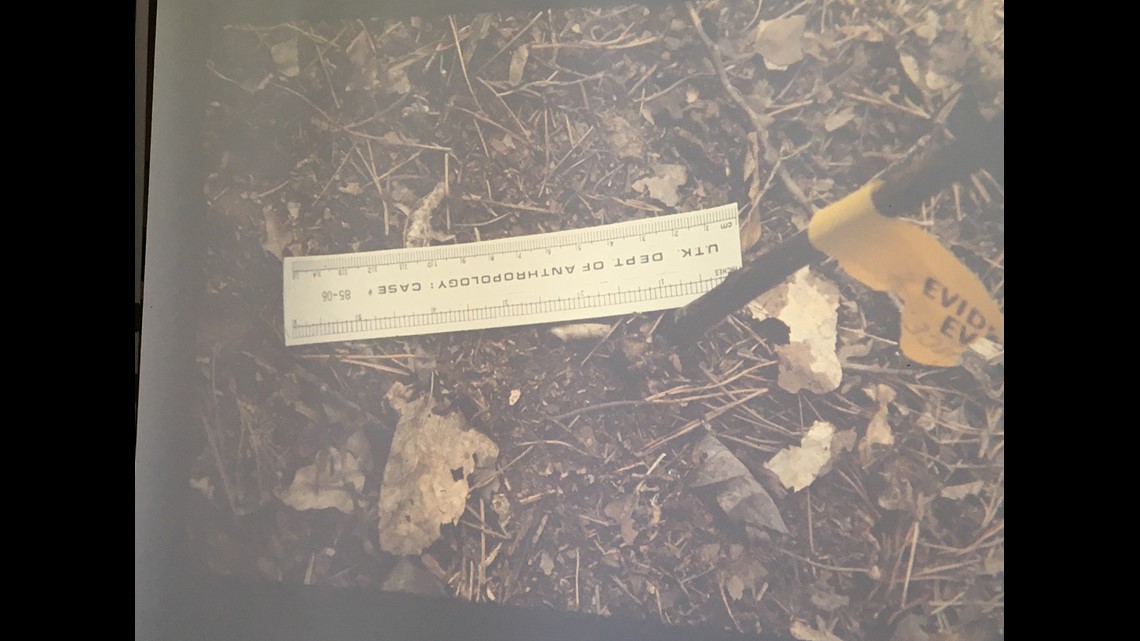
Last week, the Tennessee Bureau of Investigation and a Houston, Texas-area, laboratory announced they could finally name the female they had come to call "Baby Girl". WBIR has previously reported about the case -- before she was identified -- as part of its "Appalachian Unsolved" series.
New techniques in forensic science allowed Othram Inc. to create a DNA profile from the scantest remaining material, which had been contaminated by exposure to the elements for who knows how many years. Digital information was then uploaded to genealogical databases used by law enforcement and specialist researchers to try to match remains with living relatives.
"It's necessary that these people get their names back. It's necessary that their stories be told. It's necessary that their family can start with the investigators to go toward the steps of getting justice," Kristen Mittelman, Othram's chief development officer, told WBIR.
Now investigators have potential directions they can turn as they try to figure out how Walker ended up in Tennessee and who might have killed her. Although they know Walker vanished in 1978, they have no idea yet how long her bones sat up on that Campbell County hill.
At the time, University of Tennessee anthropologist Dr. Bill Bass estimated the remains were those of a girl probably age 10 to 15.
THE GIRL FROM INDIANA
In just a few short years, Othram in The Woodlands, Texas, has made a name for itself helping to crack genetic mysteries once thought unsolvable.
It's helped identify people cut up and dumped in lakes, found in fires, stuffed in sewage tanks. Mittleman said Othram was able to put a name to the bones of someone who turned out to be a 23-year-old schoolteacher from 1881.
They worked on one case involving spouses who'd gotten into a fight some 40 years ago in a hotel, after which the husband walked out, never to be seen again. Years later, Othram was able to tell the widow that he'd ended up a homicide victim, which is why he never came back, Mittelman said.
The lab has worked on many cases from the West including Las Vegas and Texas. They've also helped identify perpetrators from evidence left behind at decades-old crime scenes.
"If you can think of a type of evidence, we've probably done it. We've been able to help with over a thousand investigations now across the country at the local, state and federal level," Mittelman said.
Earlier this year, a sample from the Tennessee victim's remains was sent from the University of Tennessee Anthropology Department, which had been holding them, to Othram. It's developed advanced genomic techniques including what it calls "Forensic-Grade Genome Sequencing".


Their profiles feature thousands of telltale markers that can be used to narrow the person's identity and link it to stored data of known human sources.
Their process usually costs $5,000 to $7,500, and it can take about 12 weeks to come up with the unknown person's genetic profile, Mittelman said.
"We were confident that we could build a profile, we proceeded with the sequencing, and we were able to build a high-performing DNA profile," Mittelman said.
Genetic genealogist Carla Davis, a native Mississippian who works with Othram, paid for the Baby Girl case, Mittelman said. She's covered the costs to identify other unidentified victims in her home state.
Davis then conducted her own genealogical sleuthing to compare the mystery teen's genetic profile with what's accessible to researchers and police online.

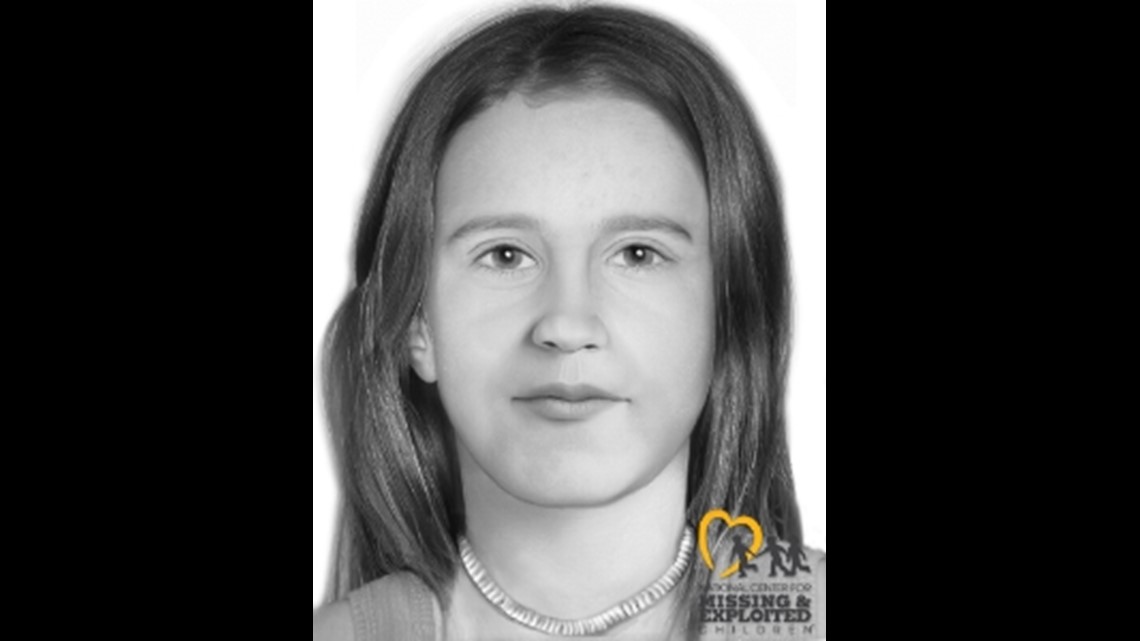
That led to the discovery of a potential relative in Indiana. The TBI, which has worked for years on the case, found possible family members in Lafayette and confirmed that Tracy Walker had disappeared years go from the area, the TBI said last week.
With help from Lafayette police, agents got DNA samples from potential relatives. That was submitted to the TBI Crime Lab in Nashville and entered into a national network of genetic data that law enforcement uses to find victims and perpetrators, according to the TBI.
Last week, the University of North Texas Center for Human Identification in Fort Worth, which had developed a profile of the victim back in 2007, confirmed based on all the data that the remains found years ago in the woods were indeed those of Tracy Sue Walker, the TBI said.
"I would not say that we bring closure -- that’s a harsh word. To lose somebody is terrible. But what we do is we bring back truth and facts. They know where their loved one is. They know that something happened to them," Mittelman said.
Still, there are thousands of unidentified people whose remains have been discovered across the United States through the years. Many state and local law enforcement agencies have a backlog.
Appalachian Unsolved: The girl in the woods
WHAT'S NEXT
Forensic science is still evolving. It's getting better.
Cases that Othram couldn't resolve just two years ago have now been re-examined and solved, Mittelman said.
The future is bright.
"I know that we're at a place where we're returning leads on these investigations every single day, and so we feel like we're only a matter of months away from being able to announce a case a day and truly start to create a dent in these backlogs that are out there and maybe get one step closer to this dream of living in a world where people don't have to wait decades to find out what happened to their loved one," Mittelman said.

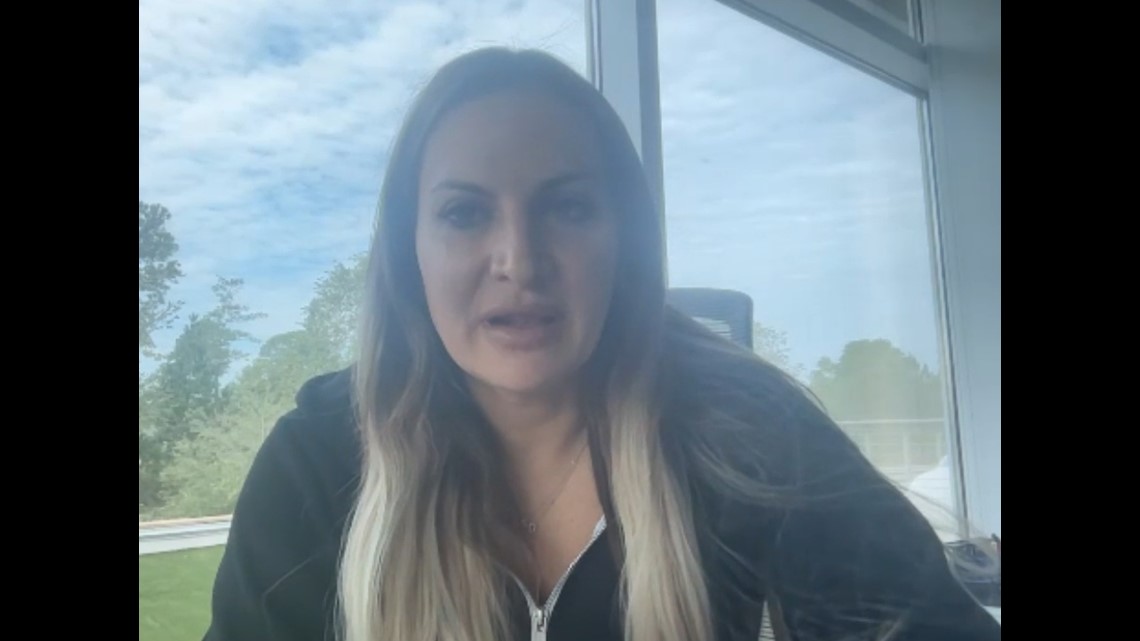
Othram has created an explanatory website that highlights unsolved cases it's working on with how the public can contribute by giving money. It's crowdfunded perhaps $500,000 already, Mittelman said.
DNASolves.com also features links to stories and releases about the many cases it's helped solved, including the Tracy Walker break.
Othram continues to work on other Tennessee cases, many of which it cannot discuss until an agency gives the all-clear.
But the Texas scientists have revealed they're looking at another Jane Doe case that WBIR featured in March -- the 2000 case of a nude woman found floating in Melton Hill Lake in Oak Ridge.
Dubbed the "Lady in the Lake," Oak Ridge police have had no luck finding out who she is. They suspect one of her last stops before dying may have been a Watt Road truck stop.
The case secured full funding in August, Mittelman said. Othram is now in the process of testing.
Late this year or early next year, another nameless victim may finally get her identity back.
If you have any information about the Tracy Walker case, call 1-800-TBI-FIND.

